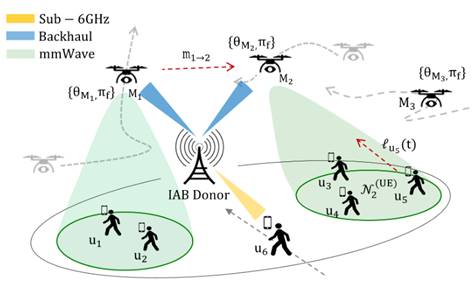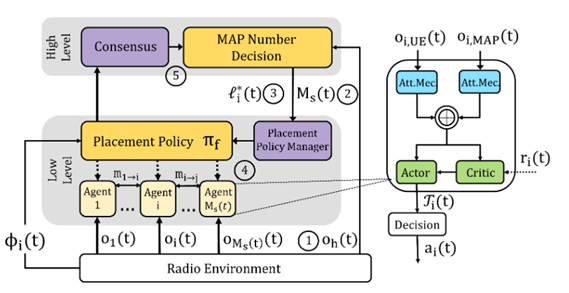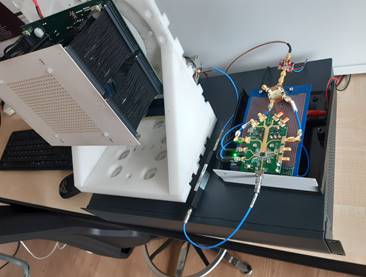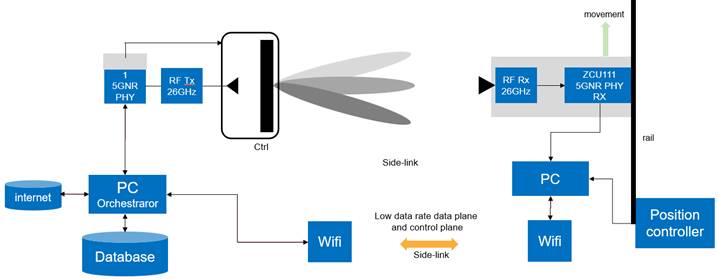What are you Looking for?

Select Sidearea
Populate the sidearea with useful widgets. It’s simple to add images, categories, latest post, social media icon links, tag clouds, and more.
Contact info
-
P: Phone:
-
E: Email:
-
A: Address:
CEA Leti in DEDICAT6G
CEA is a worldwide known research centre for its high-quality research activities in the field of electronics and information technology. In the DEDICAT 6G project, CEA serves as a technology provider, enhancing its knowledge of the Long-Term Evolution of 5G RAN design, specifically in learning and decision mechanisms for coverage and connectivity extension in dense environments. CEA aims to provide coverage extension features to industrial companies, and the results of DEDICAT 6G will be presented at Leti Innovation Days (June 27 to 29) and protected through patents and disseminated through publications in top international conferences, journals, and workshops.
In the DEDICAT 6G project, CEA is the leader of work package 4, which focuses on mechanisms for coverage and connectivity extension. CEA has investigated and implemented four strategies and AI mechanisms for deploying and configuring Mobile Access Points (MAPs) at RAN level and has implemented them in a Python simulator.
The first strategy, “Cost-Efficient and QoS-Aware User Association and 3D Placement of 6G Aerial Mobile Access Points,” defines a distributed network management approach for determining the number and optimal location of MAPs. This strategy includes a system model, scenario, utility function, and performance assessment.
The second strategy, “Dual-Attention Deep Reinforcement Learning for Multi-MAP 3D Trajectory Optimization in Dynamic 5G Networks,” proposes managing the trajectory of MAPs under dynamic constraints with reduced complexity. The solution addresses time-varying user traffic and mobility through a Multi-Agent Deep Reinforcement Learning (MADRL) approach that learns to perform distributed assignment of MAP-user positions and schedules the MAP path among all users without centralized user’s clustering feedback. The solution employs a dual-attention MADRL model via proximal policy optimization to dynamically move MAPs in 3D. The dual-attention considers information from both users and MAPs, allowing for different scenarios to be managed without a priori information and without re-training, reducing complexity significantly.
The third strategy, “Learning Hierarchical Resource Allocation and Multi-agent Coordination of 5G mobile IAB Nodes,” considers a dynamic millimeter-wave network with Integrated Access-Backhaul (IAB)l, where mobile relay nodes move to auto-reconfigure the wireless backhaul. CEA focuses on in-band relaying networks, which conduct access and backhaul links on the same frequency band with severe constraints on co-channel interference. To address this problem, CEA adopts a hierarchical multi-agent reinforcement approach with a two-level structure, where a high-level policy dynamically coordinates mobile relay nodes, defining the backhaul configuration for a low-level policy that jointly assigns user equipment to each relay and allocates the backhaul capacity to served users. The resulting solution automatically adapts the access and backhaul network to changes in the number of users, the traffic distribution, and the variations of the channels with limited complexity.
The last strategy, “Federated Multi-Agent Deep Reinforcement Learning for Dynamic and Flexible 3D Operation of 5G Multi-MAP Networks,” proposes a two-level hierarchical architecture that dynamically reconfigures the network while considering IAB constraints. The high-layer decision process determines the number of MAPs through consensus, and a joint optimization process is developed to account for co-dependence in network self-management. In the low-layer, MAPs manage their placement using a double-attention-based Deep Reinforcement Learning (DRL) model that encourages cooperation without retraining. To improve generalization and reduce complexity, a federated mechanism is proposed for training and sharing one placement model for every MAP in the low-layer. Additionally, the placement and backhaul connectivity of MAPs are jointly optimized using a multi-objective reward function, considering the impact of varying MAP placement on wireless backhaul connectivity.


CEA is also working on an additional mechanism for dynamic coverage extension: multi-hop backhauling with Integrated Access & Backhaul (IAB). With IAB, both Access and Backhaul links share the same frequency bands. It provides an alternative to optical fiber backhaul with a cost-effective and rapid deployment over an RAN network. Based on a demonstration platform with bidirectional, dual RAT capabilities, CEA has developed a demonstrator for coverage extension assuming IAB with a moving IAB node. This includes the management of access and backhaul links, multi-RAT access (mm-wave and sub-6GHz bands), and multi-beam management.



